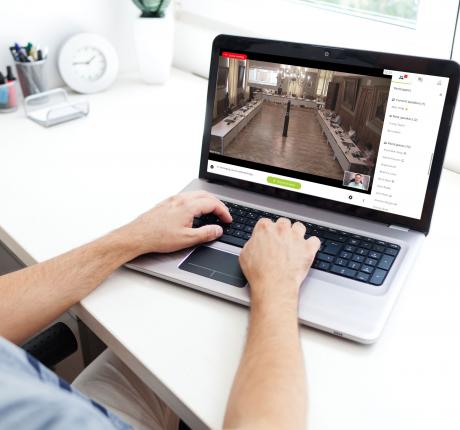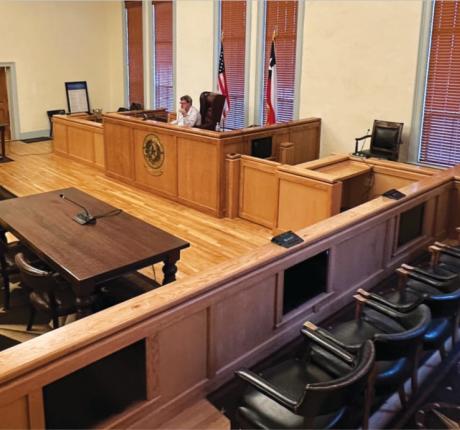DSP vs conferencing units for city council meeting set-ups
DSP vs conferencing units for city council meeting set-ups
4 reasons why modern conferencing units trump DSP systems as a solution for city council rooms
It’s a common discussion when it comes to determining the solution of choice for audio distribution in city council rooms. What is best: a DSP system as part of a central mixing and processing rack, or a conferencing solution with individual multimedia units for each council member?
Truth be told : both solutions have their advantages. But while DSP systems do have their value for distributing audio in a room, there is a reason that – in the conferencing industry – they are often referred to as ‘legacy audio systems’. Fact is, that today’s user-based conferencing units offer more ease of use and more advanced functionalities.
We give you 4 reasons to take away on why these flexible solutions trump DSP systems as the ideal conferencing set-up in your city council room.
-
Hassle-free set-up & installation
A DSP system basically is a digital audio interface that processes and optimizes all the input and signals of your audio distribution set-up. In other words: every single microphone (usually table or ceiling mounted) needs a home run to the central unit. In order to reinforce the conversation, the DSP will send an output signal to loudspeakers that need to be well-positioned in the council chamber (often ceiling mounted).
Conferencing units, on the other hand, can be easily daisy-chained, offering much easier and more flexible set-up and connection options. Every unit has its own microphone and a built-in loudspeaker. This ensures that everyone can hear and be heard perfectly, without any need for city council members to have speakers or microphones above their heads. The system is almost plug & play, which saves time and money in installation and integration.
-
Clearer audibility
Another clear advantage of the built-in speakers in every city council member’s microphone station, is the fact that it limits the distance between the loudspeaker and the council members.
This means that audio levels don’t need to be cranked up and audio distortion and feedback can be avoided. The amplification is only there to support intelligibility, not to project the sound to everyone in the room. This helps to turn your city council room into a pleasant listening environment where every city council member can efficiently get their message across.
Advanced built-in functions such as push-to-talk and request-to-speak (all available with the simple push of a button) help eliminate background noises in the amplified audio and in recordings. If a council member isn’t talking, his or her microphone isn’t on. So, no more coughing, sneezing, paper shuffling, sidebar conversations… show up in the city council recording or stream.
-
Futureproof features & integrations
Due to various reasons (remote and hybrid meetings to comply with health and safety regulations, best practices with regards to transparent government and freedom of information just to name a few), setting up an efficient city council room is no longer just about audio. And while DSP systems date back to the time when audio was all that mattered, the newer conferencing solutions are multimedia-oriented and are built to really futureproof a city council room.
For instance, today’s advanced conferencing units do not only have a dedicated microphone and loudspeaker for every individual council member. They also offer built-in functionalities such as recording and camera tracking to support video conferencing and live or on-deman streaming and webcasting.
The council member’s stations even enable document viewing (e.g. the meeting agenda) and electronic voting solutions. Text-to-speech integration facilitates the process of taking meeting minutes.
-
Ease of use
Last but not least, multimedia-based conferencing solutions offer tangible advantages for the technical staff responsible for the set-up and management of the council room as a meeting environment. As opposed to working with legacy DSP set-ups, there is no more need for guessing. There are no more sliders or knobs to handle on an analog control panel. In terms of meeting management, everything is very easy and clean in a user-friendly graphical user interface.
Streaming audio and video out of the meeting system to any platform becomes a piece of cake. And you can easily bring platforms like Zoom or Teams into the audio/video system’s interface, or even forget those platforms altogether and opt to use the dedicated, built-for-municipalities conferencing software that comes with the solutions.



